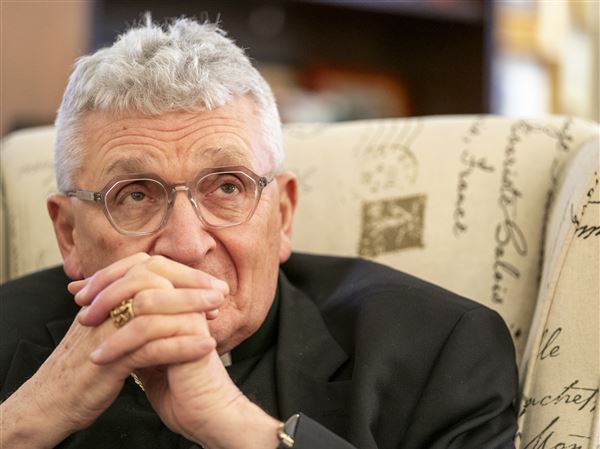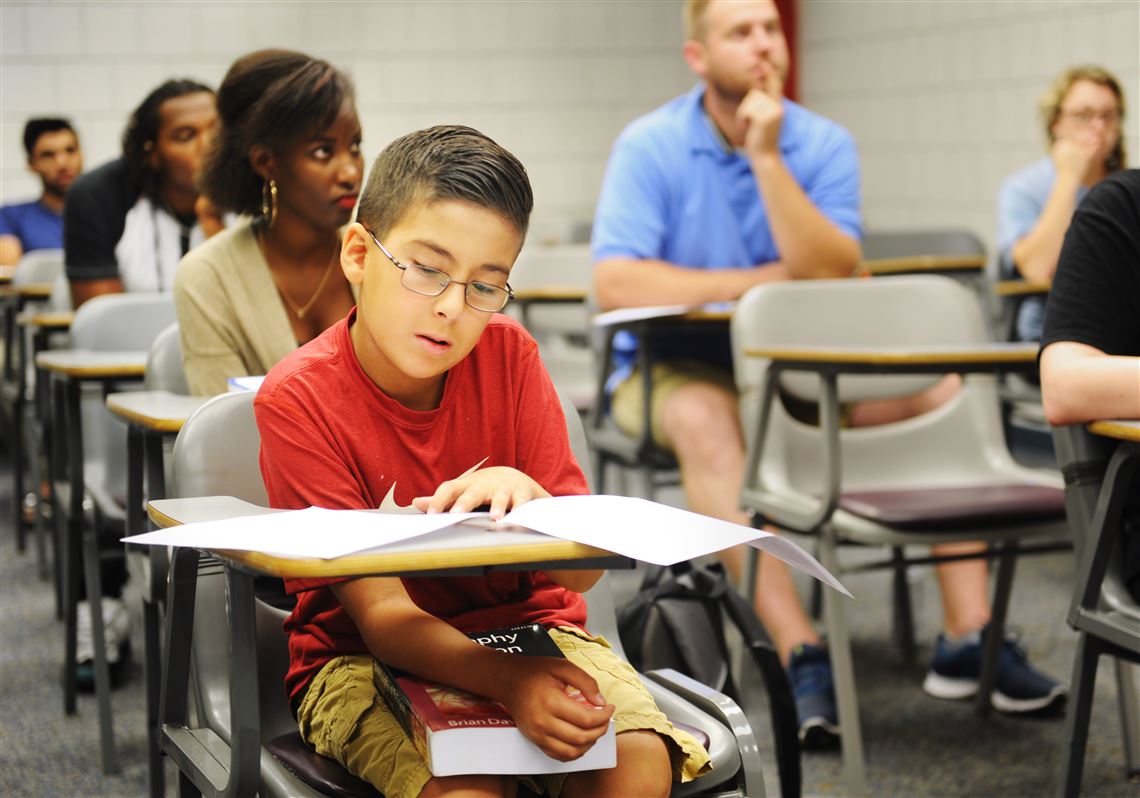Greek Orthodox Priest Peter Maillis was discussing his son William’s ability at age 5 to recite the English, Greek, French, Spanish and Hebrew alphabets, along with other language skills.
One day his son met a Chinese girl at school, and he learned to count to 100 in Chinese plus the primary and secondary colors and the names of family members — mother, father, etc. — in an hour.
“He also learned the Chinese alphabet,” Father Maillis said. But that remark caused William to give his dad a piercing glare. “There’s no Chinese alphabet,” he scolded, noting that the main Chinese dialects are Mandarin and Cantonese. “Every word has its own symbol.”
That’s when William launched into discussion of “alphasyllabary” — consonant-based — languages, one of which he’s creating based on Phoenician consonants and Greek vowels.
William is 9. He will be 10 on Oct. 3.
And he’s a genius.
On May 26, the spirited, erudite and boldly confident boy from Penn Township, Westmoreland County — looking every bit the scholar while speaking professorially — graduated from Penn-Trafford High School after passing all required exams. He was invited to enroll this summer at Carnegie Mellon University, his father said.
Believing William needed a break, Father Maillis, who serves as priest of the Presentation of Christ Greek Orthodox Church in East Pittsburgh, and his wife, Nancy, decided to enroll William at Community College of Allegheny County’s Boyce campus to get him acclimated to a full college schedule, with expectations he’ll enroll at CMU next year at the advanced age of 10.
William began talking at 7 months, telling his dad “I don’t want to” when told to lie down in his crib, while adding, “I want milk.”
He was doing addition at 21 months and multiplication at age 2 while also reading children’s books and writing his own nine-page book, “Happy Cat.” He learned algebra, sign language and how to read Greek at 4.
At age 5, William took a 209-page geometry textbook to his room one evening, read the entire thing, and by 11 the next morning, his father said, he “was solving circumference problems and had memorized pi to the 15th decimal.”
“Twentieth,” William said.
“If the radius of a circle is 2,” his father responded, “what is the circumference?”
“12.56,” William replied. (2 x pi x radius)
He proceeded to learn trigonometry at age 7 on his own through the Khan Academy online while also reading novels and writing essays. He took high school calculus at age 9.
Ohio State University psychologist Joanne Ruthsatz actually declared William a genius at age 5. The professor with a doctorate studies child prodigies — those brilliant in one domain such as art, music or math — and geniuses — those with high intelligence across a diverse range of topics.
She said she gave William the Stanford-Binet intelligence quotient test and remembered that he scored close to or reached the highest possible score of 19 in all of the categories, for the highest score possible of 160. Father Maillis said Penn-Trafford officials told him that William scored 19 with three pluses in inductive and deductive reasoning when they administered the test.
The IQ test uses 100 as the score for someone whose cognitive ability matches his or her age. Then it goes up 10 points per year above or below that level. Considering that William’s cognitive age is twice and even more than twice his chronological age, it might suggest an IQ of 200 or even higher.
Ms. Ruthsatz, who appeared on “60 Minutes” with then 8-year-old genius Jacob Barnett of Indianapolis, said William has similar cognitive abilities. “It is very rare to get a child as advanced in all domains. We call them geniuses.”
After discussing languages, William, who aspires to be an astrophysicist, turned attention to black holes, space time and an absolute void he describes as pure gravity to argue that an outside force, such as God, was necessary to begin the universe. He said his own ideas would counter those of arguably the world’s most intelligent human, Stephen Hawking.
He also tried explaining to a clueless audience about counting by infinities, then went off to draw a stylized map of Europe from memory that included every country represented by a circle whose size reflected its relative geographic size, and included each nation’s flag. He was done in minutes. When it comes to history, he’s been described as a human timeline.
But otherwise, William is your average 9-year-old.
Ms. Ruthsatz spent time with him when he was 5 and said, “He was running around the room and doing normal stuff that 5-year-olds do.”
Father Maillis said the same: “When he was explaining his ideas to me in the car one day, with my wife in the driver’s seat, I turn around and he’s drawing stick figures on the window.
“We’re normal people,” he said. “And he’s a normal kid. You can’t distinguish him from other 9-year-olds. He likes sports, television shows, the computer and video games like everyone else.”
But then those remarkable moments occur, his father noted. “He came up to me the other day and just said, ‘Nothing is random. Nothing happens without a cause.’ ”
David Templeton: dtempleton@post-gazette.com or 412-263-1578.
First Published: September 16, 2016, 4:00 a.m.
















